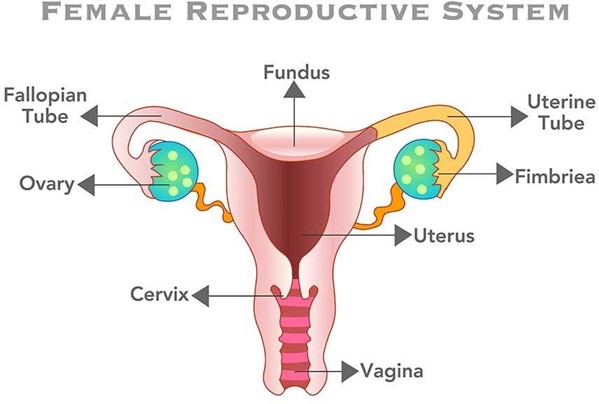A nurse is caring for a client 2 hr following a spontaneous vaginal delivery and notes that the client has saturated two perineal pads with blood in a 30-min period. Which of the following actions should the nurse take first?
Check the consistency of the client's uterine fundus.
Have the client use the bedpan to urinate.
Increase the client's fluid intake.
Prepare to administer oxytocic medication.
The Correct Answer is A
Choice A reason:
Checking the consistency of the client's uterine fundus is the first action the nurse should take, as it can indicate the cause of excessive bleeding. A boggy or soft fundus indicates uterine atony, which is the most common cause of postpartum hemorrhage. The nurse should massage the fundus until it becomes firm and contracted.
Choice B reason:
Having the client use the bedpan to urinate is an important action, as a full bladder can displace the uterus and prevent it from contracting properly. However, this is not the first action the nurse should take, as it does not address the immediate source of bleeding.
Choice C reason:
Increasing the client's fluid intake is an important action, as it can help replace fluid loss and prevent hypovolemia and shock. However, this is not the first action the nurse should take, as it does not stop the bleeding.
Choice D reason:
Preparing to administer oxytocic medication is an important action, as it can stimulate uterine contractions and reduce bleeding. However, this is not the first action the nurse should take, as it requires a provider's prescription and may not be necessary if fundal massage is effective.

Nursing Test Bank
Naxlex Comprehensive Predictor Exams
Related Questions
Correct Answer is D
Explanation
Choice D reason:
Placing the client in a knee-chest or Trendelenburg position is the first action the nurse should take, as it can relieve pressure on the cord and prevent compression and fetal hypoxia. The nurse should also use a sterile gloved hand to hold the presenting part off the cord.
Choice A reason:
Preparing the client for an emergency cesarean birth is an important action, as it can facilitate prompt delivery and prevent fetal compromise. However, this is not the first action the nurse should take, as it does not address the immediate problem of cord prolapse.
Choice B reason:
Covering the cord with a sterile, moist saline dressing is an important action, as it can prevent drying and infection of the cord. However, this is not the first action the nurse should take, as it does not address the immediate problem of cord compression.
Choice C reason:
Explaining to the client what is happening is an important action, as it can provide emotional support and education for the client. However, this is not the first action the nurse should take, as it does not address the immediate problem of cord prolapse.

Correct Answer is C
Explanation
Choice A reason: Encourage the client to nurse more frequently so her milk will come in is incorrect, as this action is not related to the data collected by the nurse. The nurse notes that the client's breasts are soft, which indicates that the milk has not come in yet. This is normal and expected for a client who is 14 hr postpartum, as milk production usually begins around 72 to 96 hr after birth. The nurse should encourage the client to nurse frequently and effectively to stimulate milk production and prevent engorgement.
Choice B reason: Increase IV fluids is incorrect, as this action is not indicated by the data collected by the nurse. The nurse notes that the client's vital signs are within normal limits, except for a slight temperature elevation. Increasing IV fluids can cause fluid overload and electrolyte imbalance in the client. The nurse should maintain the IV fluids at the prescribed rate and monitor the client's intake and output.
Choice C reason: Ask the client to empty her bladder is correct, as this action is indicated by the data collected by the nurse. The nurse notes that the client's fundus is firm but slightly deviated to the right, which suggests bladder distension. A full bladder can interfere with uterine contraction and involution and increase the risk of hemorrhage and infection. The nurse should assist the client to empty their bladder and reassess the fundal position.
Choice D reason: Report the client's temperature elevation is incorrect, as this action is not necessary for a slight temperature elevation in a postpartum client. The nurse notes that the client's temperature is 37.7° C (100° F), which is slightly above normal but within the range of expected findings for a postpartum client. A mild temperature elevation in the first 24 hr after birth can be due to dehydration, exertion, or hormonal changes and does not indicate infection. The nurse should encourage oral fluid intake and monitor the temperature every 4 hr.
Whether you are a student looking to ace your exams or a practicing nurse seeking to enhance your expertise , our nursing education contents will empower you with the confidence and competence to make a difference in the lives of patients and become a respected leader in the healthcare field.
Visit Naxlex, invest in your future and unlock endless possibilities with our unparalleled nursing education contents today
Report Wrong Answer on the Current Question
Do you disagree with the answer? If yes, what is your expected answer? Explain.
Kindly be descriptive with the issue you are facing.
